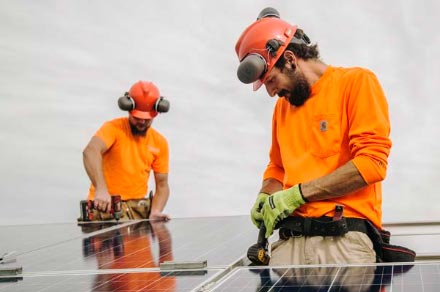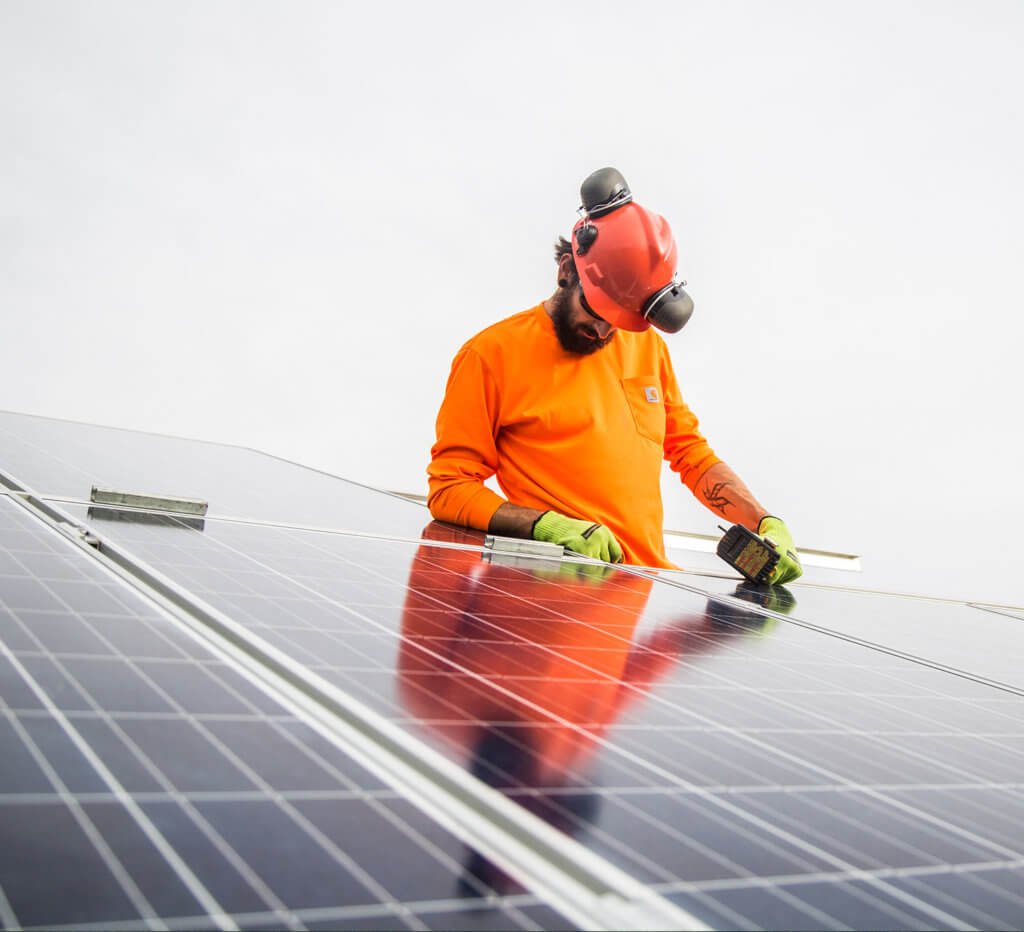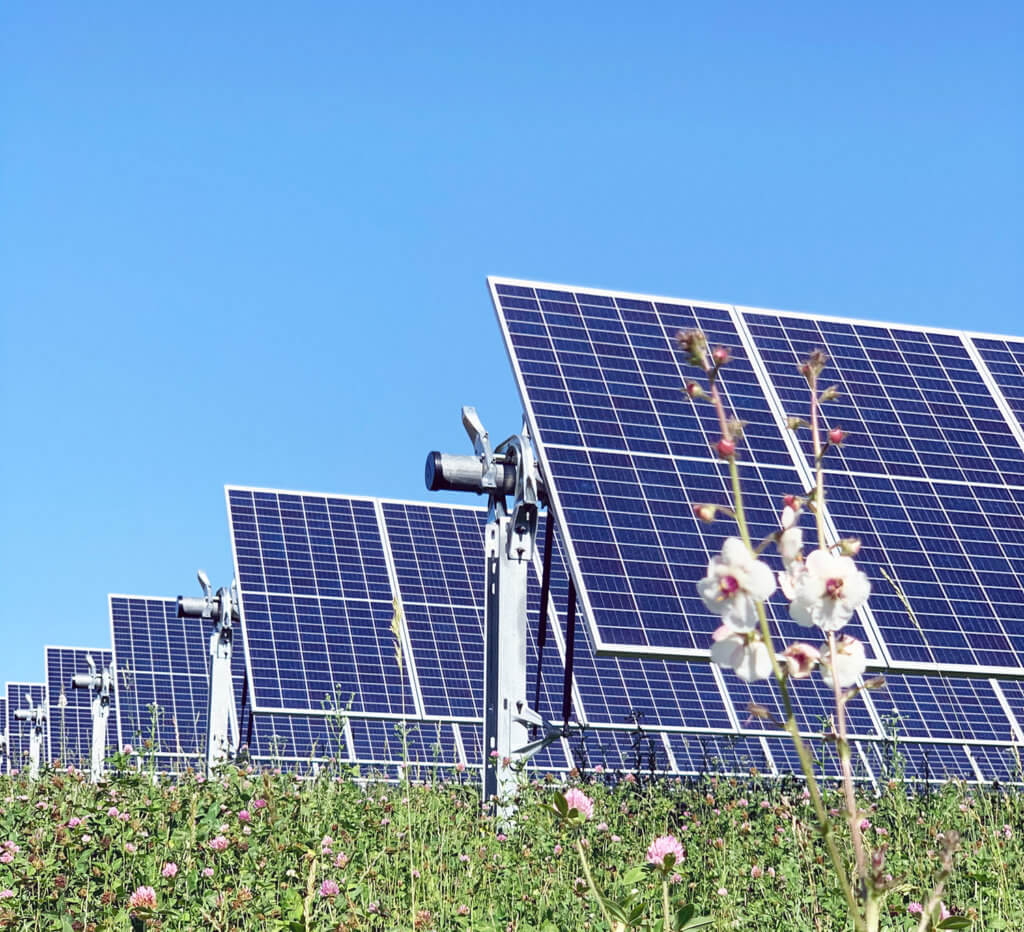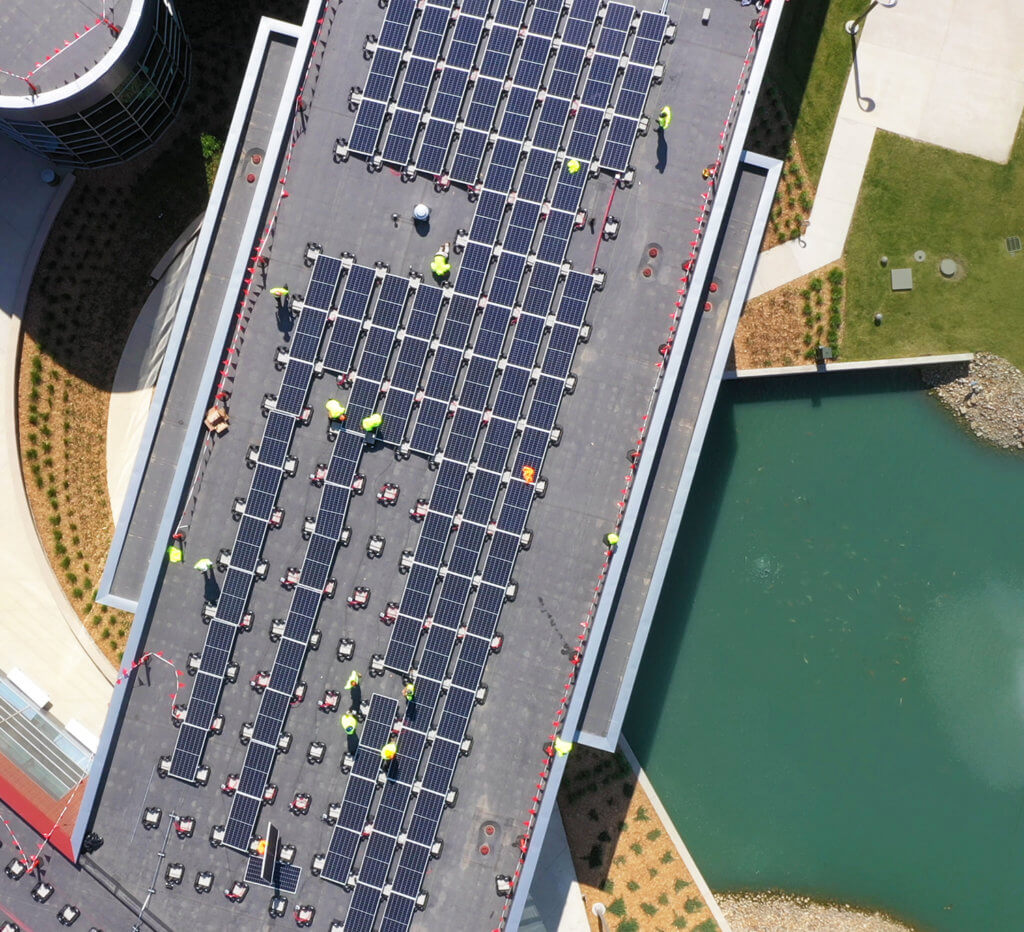In the first part of our three part series, we explore the primary components used in a solar installation and the merits of each type of equipment. We cover monofacial and bifacial panels, fixed-tilt and active tracking arrays, and different types of inverters. You can achieve the best ROI with solar components selected to match your property’s features, your electrical usage profile, and your energy production and financial goals. We explain which components best match which situations.
Components: Selecting the Right Equipment for Maximum ROI
What type of panels will be used?
Tier 1 panels are made by the most established panel manufacturers. They are usually made from excellent materials, have great warranties, and are bankable. The tier ranking system for solar panels was developed by Bloomberg New Energy Finance. It is essentially a measure of industry acceptance intended to signal to lenders that tier 1 panels are safe to loan against. As Solar Power World points out, panels from other manufacturers may also be excellent, they just lack the long track record that tier 1 manufacturers have.
Monofacial panels, which have been the industry standard for decades, have photovoltaic (PV) modules on the top side and an opaque back sheet on the underside. Bifacial panels have either a transparent back sheet or PV modules on both sides, and produce energy from both sides. Bifacial panels cost more and also produce more power. How much more depends on the reflectivity of whatever is beneath them. When installed on a highly reflective surface, like a white TPO membrane roof, bifacial panels can produce up to 30% more power than monofacial panels. Less reflective surfaces, like grass, pavement, or dark roofing materials, may yield a 5-10% increase in production.
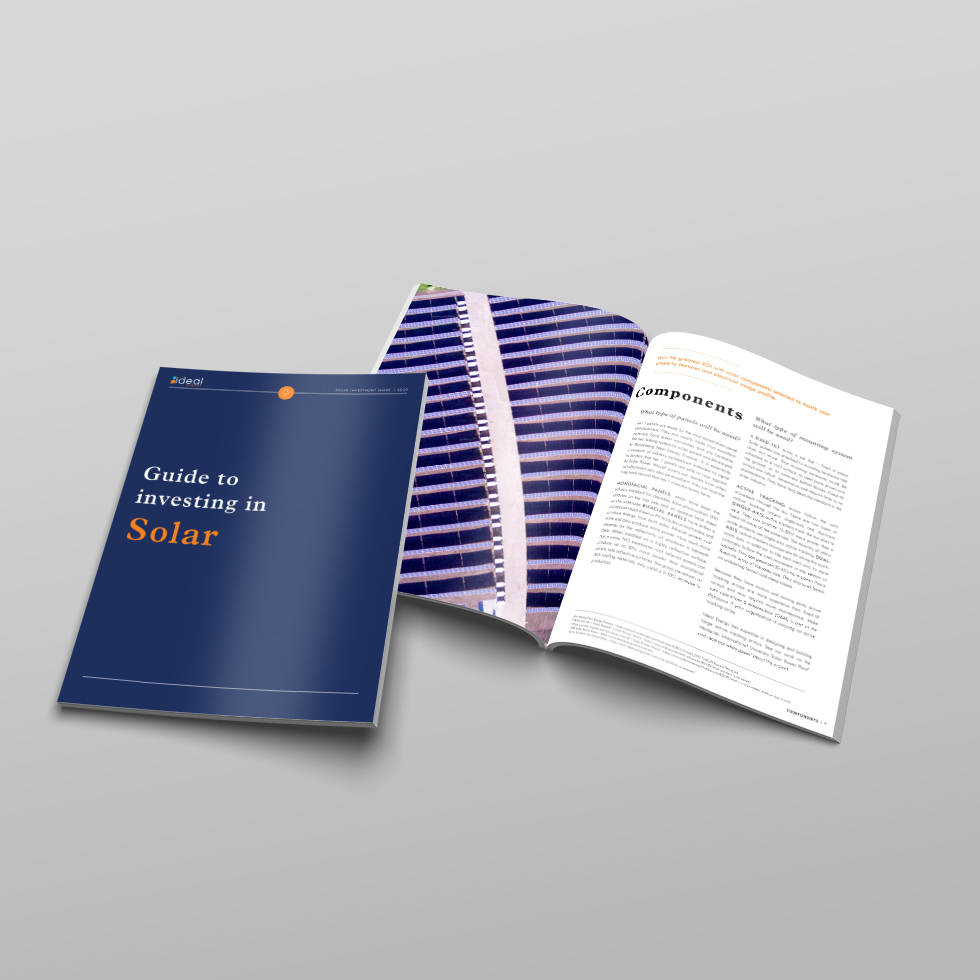
Download the complete Guide to Investing in Solar
What type of mounting system will be used — fixed-tilt or active tracking?
A fixed-tilt array is just that – fixed in place. Solar panels are attached to mounting hardware that does not move. That mounting hardware could be attached to a roof surface, to steel posts driven into the ground, or to concrete ballast blocks. Fixed-tilt arrays are robust, inexpensive, and require little to no maintenance. They have long been the standard in the solar industry.
Active tracking arrays follow the sun’s movement through the sky. They can produce 15-20% more power than a fixed-tilt array of the same size. Because they have motors and moving parts, active tracking arrays are more expensive and may require more maintenance. Make sure operations & maintenance (O&M) is part of the discussion if your organization is pursuing an active tracking array.
Ideal Energy has expertise in designing and building large active tracking arrays. See our work on the Maharishi International University Solar Power Plant and read our white paper about the project.
Below: Dual-axis trackers under construction for Vander Haag’s Inc.
What type of inverters will be used?
Inverters convert the direct current (DC) power from solar panels to alternating current (AC) that can be used in your home or business. They also track voltage, communicate with the grid, and provide emergency shutoff capability.
String inverters are located at the end of a row of solar panels and convert power from the entire row. Smaller residential installations might need only one string inverter. The primary benefit of string inverters is cost. In a 5kW installation – a typical size for a residential install – string inverters can save around $1,000 compared to microinverters. String inverters are durable, reliable, and can be located off the roof for easier maintenance. Downsides include panel-level monitoring and a less redundancy.
Microinverters sit behind each solar panel, converting power from just that one panel. The key advantage of microinverters is system efficiency. Microinverters can optimize the power output of each solar panel individually. This is especially helpful in larger arrays where shade, snowdrifts, or even cloud cover might differ from one part of the array to another. Microinverters also allow for more granular real-time performance metrics, easier expansion of the array later on, and in many cases longer warranties than string inverters. Downsides include cost, complexity, and potentially more exposure to the elements.
Power optimizers sit behind each individual panel, like microinverters. Unlike inverters, however, they do not convert power from DC to AC. In fact, they have to be used in conjunction with string inverters. Their purpose is to condition the power before sending it to an inverter. Power optimizers are often used along with battery energy storage systems. Conditioned power is sent to a battery while it is still DC and the string inverter is located downstream of the battery. This minimizes the number of times power has to be converted from DC to AC, while still allowing panel-level optimizing and monitoring.
What’s next?
In part two of our ‘Guide to Investing in Solar’ series, we dive into the calculations behind a solar installation bid. We cover some of the key terms you’ll see in your bid, including offset, production, specific yield, degradation factor, and cost of energy escalator, and how these impact your project ROI.

